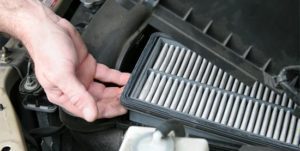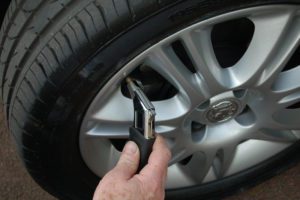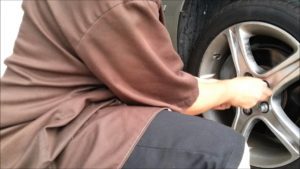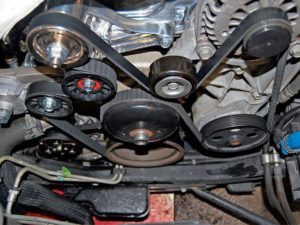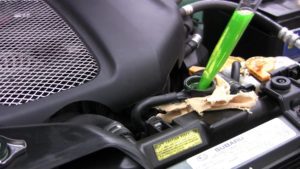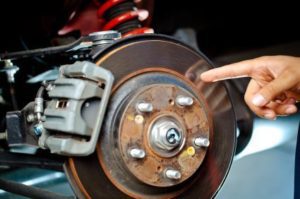Performing regular maintenance on your vehicle keeps it in good condition, saves you loads of money in the long run and also prevents breakdowns. There is quite a lot that the average DIY fan can do to keep their vehicle in the best running condition. Remember that eventually things will start to break on your vehicle but it is almost always cheaper to replace parts than to replace the entire vehicle. Be sure to look for any parts you may need at PMJ International.
When your vehicle is new, you should always follow the supplied service schedule. Most modern new vehicles are supplied with a 3 to 5 year maintenance plan which requires the vehicle to be brought in for a full service after a certain distance has been driven or every year. Be sure to follow these plans meticulously or the dealer will impose penalties on your plan or void it all together.
When your vehicle is outside of its warranty period and you are tasked with maintaining it yourself, it is still a good idea to have the car looked at by a professional service centre periodically as they will be able to open the engine up and inspect the hard to reach components, gaskets and seals. One of the best investments you can make when you are maintaining your own car outside of a factory warranty is a service manual. These books offer you valuable advice and step by step instructions on maintaining and replacing components specific to your vehicle model.
Here is a list of the things you should take care of periodically to keep your vehicle running smoothly.
Check the Fluid Levels
All of the fluid levels should be checked on a monthly basis. These include the power steering, brake fluid, coolant/antifreeze, windscreen washer fluid and transmission fluid reservoirs. All of these fluids, with the exception of the windscreen washer fluid, play a vital role in the operation of the car and may compromise the safety of the passengers or cause costly damage to the engine if they run dry.
Replace the Air Filter
The air filter prevents dirt and dust from entering your car’s engine. If you live in a rural location or drive on dirt roads frequently then it is important to replace your air filter every six months to a year. A fresh air filter improves engine performance by not restricting the airflow and ensures that your engine is getting a clean supply of air. A broken air filter could allow dirt particles to enter the engine and clog the injectors which will be costly to repair.
Check Your Tyre Pressure
Your vehicles traction, fuel consumption and stability are affected by the air pressure in the tyres. Over inflation is often as bad an under inflation. As a general rule of thumb you should check your vehicles tyre pressure at least once a month and ensure that the pressure is in line with the manufacturer’s recommendation. This is usually found in the handbook or inside the door of the vehicle and can be done when you refuel or with a handheld tyre pressure gauge.
Rotate Your Tyres
Your vehicle’s tyres never wear evenly, whether your vehicle is front or rear wheel drive, how the vehicle is loaded, the tyre pressure and wheel alignment all affect how the tyres wear on the road. Rotate you tyres regularly for your safety and to ensure that you get the maximum life out of each set. This can be done easily at home with the tool kit supplied with your vehicle or with your own workshop jack and wheel spanner. Jack stands are essential to keep the vehicle elevated while you swap two tyres around. Alternately most tyre dealerships offer a tyre rotation service relatively cheaply and will offer advice on worn out or damaged tyres. Tyre should be rotated once every six months to get the maximum life out of them.
Serpentine Belt
The serpentine belt keeps all of your vehicles auxiliaries running such as the alternator, air conditioner, power steering etc. The rubber in the belt perishes with time and should be periodically replaced. Small cracks in the surface of the belt around pulleys should be visible when the belt is perishing. Replace your belts every two to three years to keep them strong and flexible.
Replace Spark Plug Leads
The continuous vibration and movement of the engine eventually causes the spark plug leads to fatigue and break down causing misfiring. It is a good idea to replace them every five years and usually only involves unplugging the two ends of each of the old ones and replacing them with new ones.
Change Your Oil
Changing your vehicles oil can be slightly messy but is one of the most effective maintenance tips. A good quality lubricant protects your engine components from wear. While you are changing the oil, be sure to change the oil filter as well, a good quality filter removes suspended particles form the oil and prevents them from damaging the engine components. The oil should be replaced annually or roughly every 15000 kilometres (5500 miles).
Flush Your Coolant
Over time, your vehicles coolant system becomes contaminated with particles and corrosion. If not cleaned out, these particles can get trapped in the radiator, pump or thermostat which reduces the efficiency of the cooling system and may result in overheating. The coolant system should be flushed out and replaced with clean coolant every year.
Listen For Strange Noises
Once a month, turn the radio and air conditioner off for a few minutes and listen out for any unusual noises both while the engine is idling and while driving. Some common sounds include metallic noises when braking which indicates worn out brake pads, a ticking noise while moving which could be a nail stuck in a tyre, a scrapping noise may indicate that something is hanging off the vehicle and making contact with the road. It is always best to detect and fix problems early before they become a costly repair.



